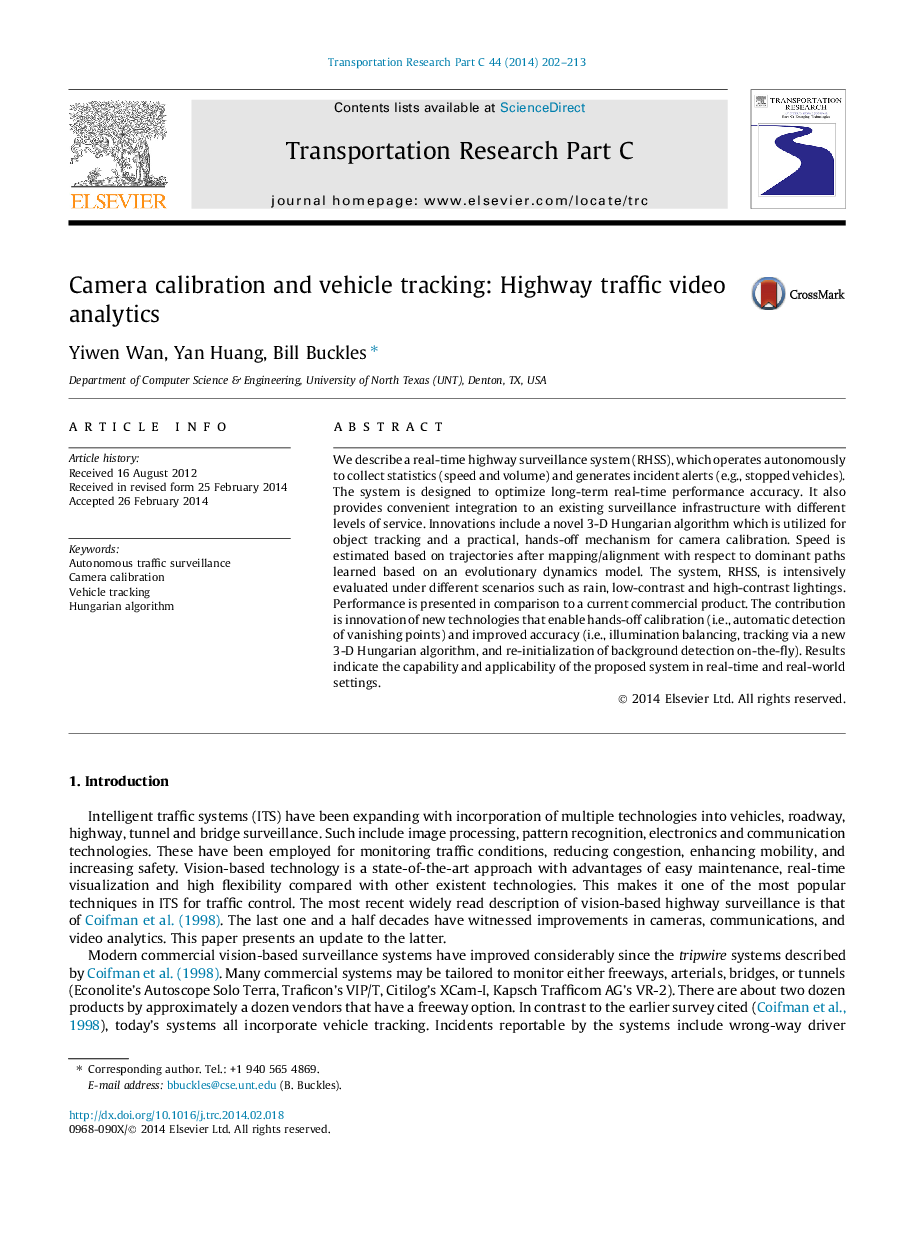| Article ID | Journal | Published Year | Pages | File Type |
|---|---|---|---|---|
| 524795 | Transportation Research Part C: Emerging Technologies | 2014 | 12 Pages |
•Cost functions for matching objects at different times based on direction of travel, distance traveled, and speed.•Graph-based tripartite (3D) Hungarian algorithm for tracking vehicles across time frames.•Two vanishing points and width (VVW) method for camera calibration that is fully autonomous.•Automatic determination of regions of interest and vehicle detection zones.•Validation over varied weather conditions and compared with an alternative system.
We describe a real-time highway surveillance system (RHSS), which operates autonomously to collect statistics (speed and volume) and generates incident alerts (e.g., stopped vehicles). The system is designed to optimize long-term real-time performance accuracy. It also provides convenient integration to an existing surveillance infrastructure with different levels of service. Innovations include a novel 3-D Hungarian algorithm which is utilized for object tracking and a practical, hands-off mechanism for camera calibration. Speed is estimated based on trajectories after mapping/alignment with respect to dominant paths learned based on an evolutionary dynamics model. The system, RHSS, is intensively evaluated under different scenarios such as rain, low-contrast and high-contrast lightings. Performance is presented in comparison to a current commercial product. The contribution is innovation of new technologies that enable hands-off calibration (i.e., automatic detection of vanishing points) and improved accuracy (i.e., illumination balancing, tracking via a new 3-D Hungarian algorithm, and re-initialization of background detection on-the-fly). Results indicate the capability and applicability of the proposed system in real-time and real-world settings.
